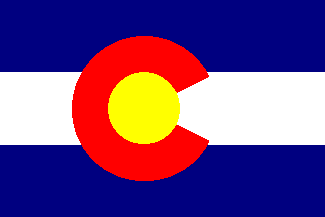|
|
Central Colorado 2003 |
Unfortunately, our departure from Snowmass was delayed, as I had to participate in a work-related conference call. Brian sampled the hotel's complementary breakfast, which was average at best. After my call concluded, we went to a local café for a pancake breakfast. It was to be another beautiful day in central Colorado.
We packed up the Ford Explorer and headed north on CO-82 in the direction of Glenwood Springs. Just outside of Snowmass, the highway was closed due to construction, so we were diverted to a local two-lane road. This diversion followed the Roaring Fork River, which also is the name of the valley in which Aspen sits. We passed through the towns of Snowmass, Basalt, El Jebel, Carbondale and Cardiff, all of which were small and nondescript.
Glenwood Springs lies at the intersection of CO-82 and Interstate 70, about 120 miles east of the Colorado-Utah border. The area had been inhabited for centuries, but the Ute Indians, which lived here because of the therapeutic hot springs. They called this area Yampah, meaning big medicine, and aggressively defended it from Comanche and Cheyenne invaders. The first non-native settlers arrived in 1860. While exploring the Eagle River Valley, Captain Richard Sopris took ill and the Ute Indians brought him to the area to be healed by the water from the hot springs. The silver rush of the 1870s brought an influx of people, including one John Landis, who claimed the springs for himself.
In 1885, Glenwood Springs was incorporated by Walter Devereux. Knowing that the springs would be a tourist haven, he began to solicit investment to build a tourism infrastructure. The Denver and Rio Grande Railroad arrived in 1887, which provided the transportation to bring tourists. In 1888, the springs had been converted into a 405 foot by 100 foot pool, which an adjacent bathhouse and resort.
Five years later, in 1893, the Hotel Colorado was completed, which provided luxurious accommodations for the visiting tourists. The casino drew a number of celebrities from the period, including Doc Holliday. During the same year, the silver market collapsed, which had a dramatic effect on the town. For a number of decades, Glenwood Springs was a sleepy western Colorado town. The town has benefited, though, from the recent boom in the skiing industry.
We made three stops in Glenwood Springs. First, just beyond 13th Street and Palmer Avenue is the trailhead for the half-mile hike to the Linwood Cemetery. As well as being the final resting place for a number of the city's elite families, it also contains the grave of Doc Holliday, the famous gambler and "roustabout". It was a hot day, so the hike was a bit taxing. But there were a number of signs along the way that provided the history of the town and surrounding area.
|
|
|
| Part of the half-mile trail leading to the Linwood Cemetery | Brian is standing behind Doc Holliday's grave |
Brian and I found Glenwood Springs to be a very pleasant town. There is a nice downtown area, which a number of restaurants and stores. Just beyond the downtown area and across I-70 is the Glenwood Hot Springs Pool. For a mere $12, swimmers can enter the large 91°F pool or the smaller pool at 104°F. Both pools felt great and were crowded with families on summer vacation. After the hike to Doc Holliday's grave, the sulfur-smelling waters were therapeutic on our tired leg muscles. This facility has entertained a number of celebrities, including US president Theodore Roosevelt.
|
|
|
| The temperature of the smaller pool, in the foreground, approaches 104°F. | The temperature of this 3.5-million gallon pool is maintained at 91°F. |
|
|
|
| This beautiful building is the swim club | This is the front of the swim club |
After feasting on a nutritious lunch at the local Wendy's, we headed east on Interstate 70, in the direction of Vail. This route follows the Colorado River for several miles; there were several rafting groups riding the rough rapids of the river. Brian and I stopped just outside Gypsum to take pictures of the river.
| Brian is standing on the banks of the Colorado River just outside Gypsum, Colorado. East of this point, the river heads north in the White River National Forest and the Gore Range of the Rocky Mountains. For east is Lake Granby, which serves as the source of the river. |
We stopped in Vail, another prominent ski area in central Colorado. It was later in the afternoon, there were many tourists walking the streets and buying souvenirs. Brian and I walked around the town, stopping in a few stores and visiting the base of Vail's ski lifts. Since we were both tired and anxious to return to Breckenridge, we stayed in Vail only an hour. We headed back to my parents' house for a quiet and relaxing evening.
|
|
|
| Brian on a bridge over the stream that passes through Vail | The construction of this bridge was financed by John and Cissy Dobson in 1966. |
|
|
|
| Downtown Vail | Brian in downtown Vail |
Proceed to Days
Five through Seven or
return to Main Colorado Page
